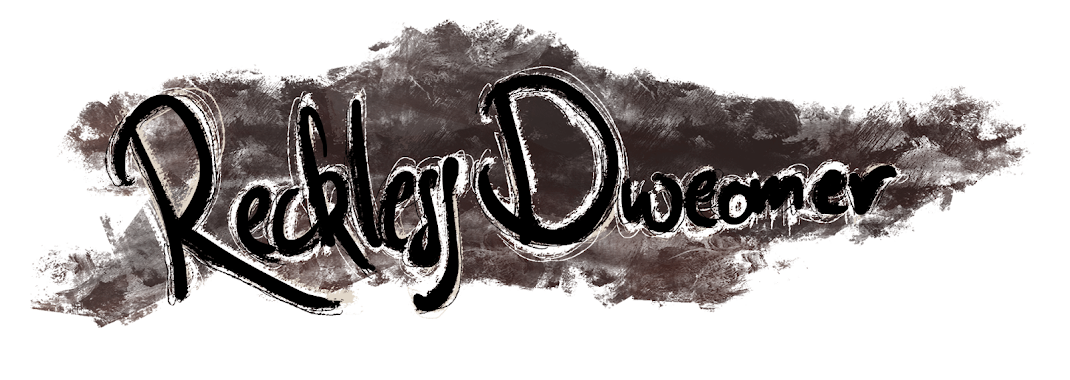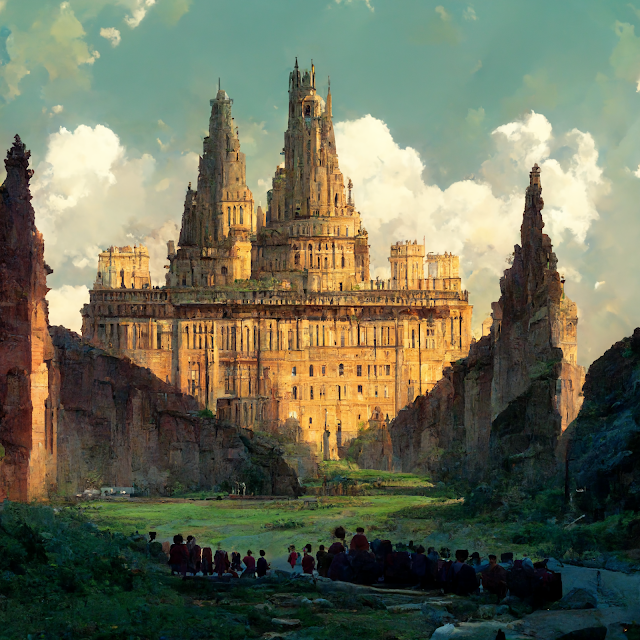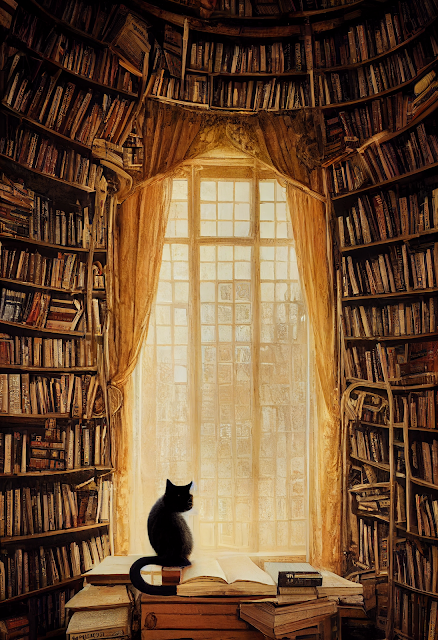(edit 12/03/2024: I used AI to make the images in this article before I realised
how morally bankrupt the whole thing was. I'm not going to delete them but I am going to point out that the generative AI industry isn't far from a form of modern slavery. It's hollow and awful. Stealing work from artists and using that stolen work to train an algorithm is short-sighted, foolish, and basically evil.)
The Eight Schools of Magic
As a trained educator, I am somewhat aware that there are many different styles of learning. What I mean by this is not what people often think of - it is not a simple case of 'I am a visual learner,' or 'I am an auditory learner.' Of course, some people prefer to learn through reading, others through observation, and others through doing, but it is more than that.
What if each school of magic (Illusion, Evocation, Enchantment, Necromancy, Abjuration, Divination, Transmutation, and Conjuration) had its own unique and learning-style inspired establishment through which wizards learnt their craft? I think it could be really interesting to think about what kind of learning style is suggested by each school of magic, and create something accordingly. The different schools approach training and education in different ways. They have different ways of seeing based on the conceptual lenses they look through.
To help us along, I've thought of several learning styles which I'd like to slot into various places:
Reflection: Learning done by looking inwards and reflecting on one's self, achievements, and decisions. The kind of progress a person can make through meditation is a good example of this kind of learning.
Trial and Error: Learning done by trying things out practically rather than theoretically. Sometimes this is called kinesthetic learning, but it's basically just learning through getting your hands dirty. It can be likened to practising a musical instrument or learning to dance.
Talk: Learning through debate, through talk and conversation. Communicating and talking through ideas can massively facilitate the learning process.
Experience: Informal learning done simply through living and accumulating knowledge and experiences.
Autodidactism: Actively teaching oneself without having a programme of education or a selected teacher.
Skills-based learning: A formal curriculum which focuses on teaching transferrable skills which can be applied in various contexts
Knowledge-based learning: A formal curriculum focused on imparting large amounts of subject-specific knowledge
Rote: Learning done by simply memorising and repeating information
Now, I know this isn't the neatest list, conceptually speaking. There is a lot of overlap between some of these categories. They interweave, they cooperate and complement each other, and I haven't covered all my bases in terms of setting up opposing styles of learning on opposite sides of the ideological and magical spectrum, but I did have a look at the most powerful spells and conclude on some big and important themes for each school based on those. For example, the most powerful Transmutation spell is Time Stop, so I thought, 'Hey let's give the Transmutation school some cool time-based thing,' and so on. But again, I haven't done that across the board. I've just done what I thought would be interesting, trying to keep each school unique in its flavour while avoiding anything too close to everyone's favourite (for some reason) TERF-wizard-bin-fire.

I think it is important to note that these are not schools of which the public is generally aware. They
are difficult to find and difficult to get into. They must be looked for
by those who are willing to seek them, and those who have the skill to
do so. The location of these places are a closely guarded secret, for
obvious reasons. We know what happens to the quality and direction
research if too much state or industry funding gets in. Agendas all over
the place.
And so, here are eight new locations which players can visit or originate from. I have plans to write eight new arcane traditions for Wizards too, and a boatload of new cantrips. I love cantrips.
The Warren School - Illusion - Introspection and Reflection
The Warren. A series of natural caverns and caves beneath the earth. A school in which no light, natural or artificial, is permitted. Only the radiance of magic itself may light the rough-hewn walls of the Warren. The mages of this school value the knowledge one can gain through introspection, self-reflection, and meditation. They are trained to see magic as light itself.
Cantrips of the school:
Lightscribe- The wizard uses their finger as a writing implement, leaving a luminous script on whatever surface they touch. They may choose whether this script is visible with the naked eye, or whether it may only be seen with a Detect Magic spell. The script may last on a surface for up to one week- the duration is chosen by the caster at the time of casting. It may also be dismissed by the caster whevener they choose before this duration elapses. At higher levels, the wizard may choose to extend the duration by a further week or even to make it permanent.
Seeing- Mages from the Warren are able to see the flow of magic with only a moment's concentration. They may detect whether magic has been used in this area up to 24 hours previously, or whether there is a current magical item or spell in effect. They percieve the magic as luminous tenrdils emanating from an object, or weaving around a space like the threads of a tapestry. At higher levels, they may discern the school of magic used to create the effect. At higher levels still, they may be able to tell which specific spell was cast in the area.
The Brass Halls - Evocation - Trial and Error - Practical and Kinesthetic Learning
Arcades and vaulted chambers built into the side of a high cliff. Entire rooms lined with metal, with shining brass, engraved with a library's worth of spells and hundreds of years' worth of knowledge. Paper doesn't tend to do so well in a school of Evocation. The students here learn through working directly with magic, with the elements that they aspire to control, and by engaging each other's skills in duels and gestalt invocations.
Mages of this school are adept at working with different elements, and can switch between them easily. They can also work in tandem with other mages to augment and amplify their spells.
The Grey Charter - Enchantment - Talk and Debate

Every spell ever created is contained within its walls, along with extensive magical theory on each one, but there are none to be cast. Nothing so vulgar as the frivolous and wasteful use of magic that is casting mere spells happens in this school. Inside the quiet confines of the Grey Charter, there is only talk - endless debate about the Great Work itself - about which magics are the most worthy, which ones are the most valuable. It is a mage's duty and privilege to learn and learn, until they can create the single most wonderful, beautiful, necessary piece of magic they possibly can. After that, they are spent and must retire to the position of emeritus to once more debate and talk with their fellows, to encourage future mages in their task. Many spend the rest of their lives writing their thesis, their Great Work on the magic they created, in the hopes that it will spur generations of future mages on to ever greater things. The school follows a model of social, dialectical scholarship, a collective of close comradeship.

The Itinerant School - Necromancy - The School of Life
This school has no buildings, no hallowed halls to call its own. This school is not bricks and mortar. This school is the flesh and bones of its followers, their aching feet and their cold fingers. It is in the hospitality of the common folk, and in their wisdom, too. Knowledge is inscribed upon the skin and stitched into rags - the knowledge contained in bones and in forgotten folk. The Itinerant scholars are keepers of forgotten knowledge, guardians of precious treasures gained from experience itself. They are scholars of the school of life, their knowledge gained from the world around them, their wisdom sought from the collective thoughts and memories of ages past.
The Poor School - Abjuration - Self-Directed Learning
A sanctuary for the needy, a place for those with nowhere else to go. It is a safehouse, hidden except from those who require it. The school is run by a cat. Sometimes it talks, and sometimes it is just a cat. No one knows if this is intentional. If questioned, the principal offers some vague paw-waving or deflects with its own question. The corridors are narrow, lined with books, and lead to lofty reading spaces with softly sunlit windows. The place is warm, wooden, and welcoming.
Self-determined curriculum. A collaborate student-teacher model. The teachers will work with students to create a body of knowledge to fit the student's talents and interests.
Sealight Tower - Divination - Seeing From Different Perspectives
The mages of the Sealight Tower study the patterns of the multiverse to hone their skills of prediction and foresight. The tower is a metaphysical fulcrum- an armillary lynchpin around which the dimensions of the multiverse are pulled into alignment. From the spiral of its infinite stair, many rooms with many windows open to many places, all of which offer different perspectives on the stars of the known worlds. The school advocates a skills-based curriculum, seeing patterns wherever you look.
The Serpentine Gates - Transmutation - Tradition and Rigour
sidjgbisdgbsdg.png)
Mired in the past, cut off from the world. It is its own universe. At the entrance to this school, a great metal gate stands, entwined with serpents weaving over and under each other. Upon walking through this gate, the student enters a realm where the boundaries between different times may be traversed as easily as walking between two rooms. Doorways in the School of the Serpentine Gates lead to yesterday, or to last year, or to last century, and in walking through gates in a particular order, one may find themselves transported to a desired date. Students often carry with them long lists of directions, reams of paper scribbled with which turn to take and which door to go through (this also helps them to find their way back). They may even wish to see the world of the past outside the school, and would be free to do so if they wished. The catch is that a student may never travel forwards from their time of entry, and once a student leaves the Serpentine Gates, they exit their original continuum. The well of potentiality through which they delved becomes once again a shallow puddle. Once this is done, they may never find their way back to their original place or time. There are some who never leave. They wander through the halls and the twisting paths of the Serpentine Gates for the whole span of their lives, learning forever. They become entwined with the place and never return home.
Curriculum-based learning, a focus on knowledge, stricture, rigour, and tradition. Influential figures of the past are venerated. Great wizards give lectures, and students come from near and far (both spatially and temporally) to watch them.
The Whispering Wall - Conjuration - Rote and Recitation
Scrolls upon scrolls upon scrolls. All the words uttered in the whole of the cosmos are channeled through the Whispering Wall. They echo off its bricks and seep through its cracks. Students listen intently for wisdom to trickle down to them, their ears pressed hard against the cold stone. Learning is done by rote, words committed to memory. Verses are recited and passed down from one generation of students and teachers to the next. The memorisation and chanting of spell-mantras are commonplace in this school.
I think these schools could be an interesting basis to a game or a RPG supplement which focuses on wizards and magic as a core mechanic.
I have a lot more to write on these, but that takes time, so I want to shove it up here for now. I'll take it down again to work on it some more at a later date. It's a fun idea for now.
Peace,
O

















sidjgbisdgbsdg.png)
